Louver Requirements and Testing Standards for the Hurricane-Prone Region
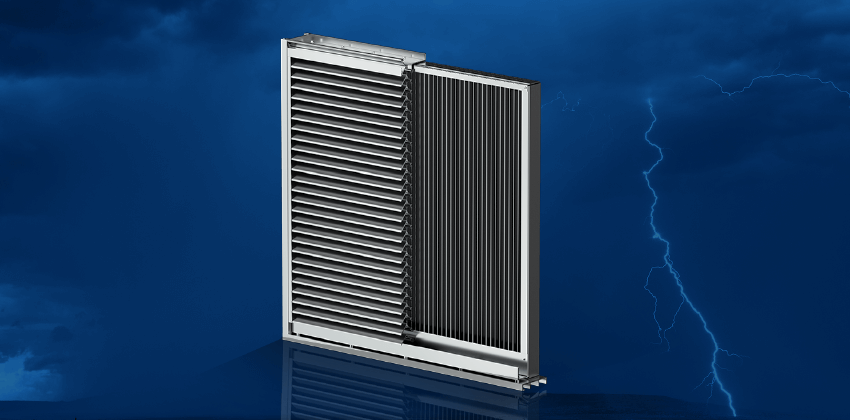
Over the last decade, more than 40 hurricanes and tropical storms have made landfall in the United States and its territories. These storms pose extreme risks for inhabitants of the areas affected, including injury and loss of life. Additional risks include damage to homes, commercial buildings, and infrastructure, along with the expenses for repairs and replacements.
Hurricanes and tropical storms wreak havoc by delivering extreme wind-pressure loading, wind-borne debris, coastal flooding, and wind-driven rain. The Accumulated Cyclone Energy (ACE) Index shows that tropical cyclones are getting stronger and more severe. The estimated financial impact of these storms totals nearly $60 billion annually and expenses continue to rise.
Louvers designed for use in areas known as the Hurricane-Prone Region (HPR) have many code requirements. These include wind-driven rain testing and high wind-load pressure design criteria, along with wind-borne debris impact testing. Code requirements make sure that products protect as intended but listing them all would take more space than is available for this post. With that in mind, we will focus on wind-driven rain testing.
The following is what design professionals, contractors, building owners, and building inspectors need to know about wind-driven rain testing in the hurricane-prone region.
Where is the Hurricane-Prone Region?
The Hurricane-Prone Region actually comprises more than one geographic location of the U.S. It stretches from the Gulf Coast through the majority of the East Coast. However, it also includes Hawaii, Puerto Rico, Guam, Virgin Islands, and American Samoa. The Hurricane-Prone Region (Figure 1) affects seventeen states in part or wholly. These areas, as defined by the International Building Code (IBC), are where the basic wind speed for Risk Category II buildings is greater than 115 mph.
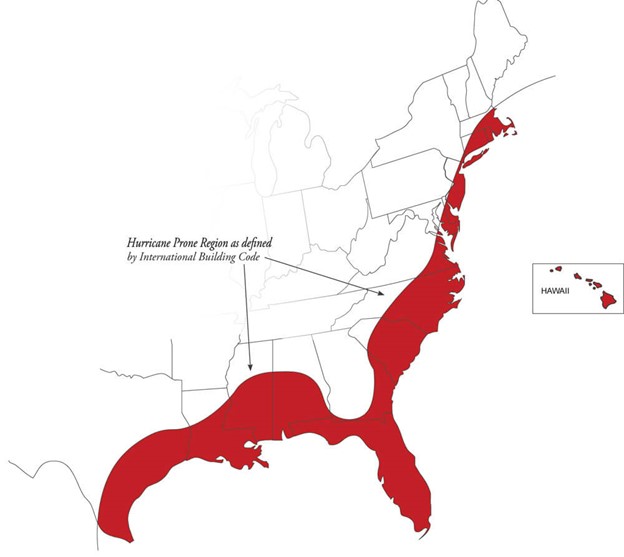 |
| Figure 1 Hurricane Prone Region (HPR) |
Many population centers are located in the HPR, including:
- Miami, Tampa, and Orlando in FL
- Honolulu, HI
- New Orleans and Baton Rouge in LA
- Boston and Cape Cod in MA
- Raleigh, Fayetteville, and Wilmington in NC
- Coastal New Jersey
- New York City and Long Island in NY
- Providence, RI
- Houston and Galveston in TX
Hurricane Louvers and Third-Party Testing for AMCA 550
Air intake and exhaust louvers in the Hurricane-Prone Region must comply with the Air Movement and Control Association International (AMCA) Standard 550. This is based on the most recent iterations of the International Mechanical Code (IMC), beginning with IMC version 2012.
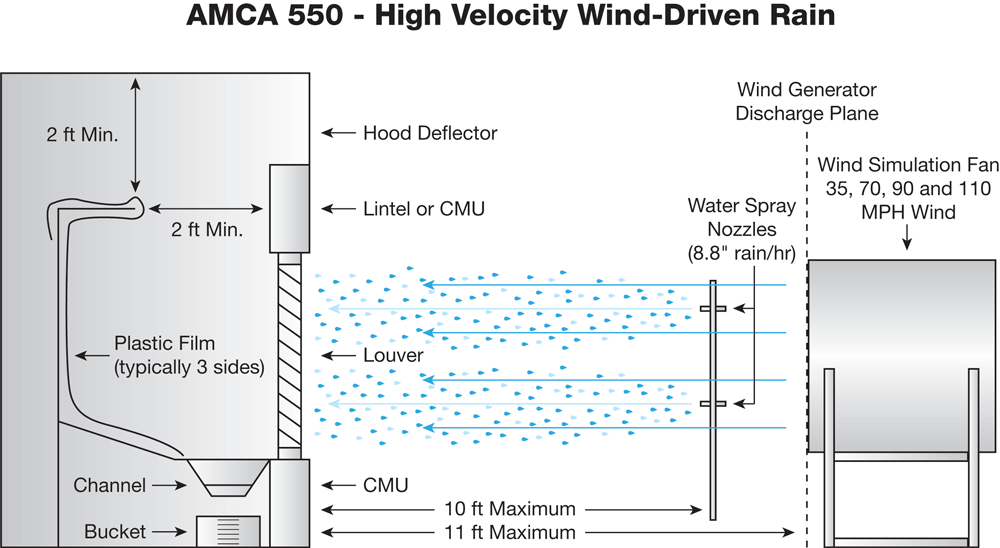 |
| Figure 2 |
- AMCA 550 positions a fan in front of a louver test specimen to simulate extreme horizontal driving rain. The fan mimics wind speeds of 35, 70, 90, and 110 mph.
- Water spray nozzles between the fan and the louver simulate a rainfall rate of 8.8 inches per hour, using around 250 gallons of water.
- The dynamic test duration is 50 minutes, broken down into 15-minute segments of 35, 70, and 90 mph. The final segment of the test is at maximum (110 mph) for five minutes.
- AMCA 550 is a pass/fail test. More than one percent of total sprayed water volume (2.5 gallons +/-) collected behind the test louver is cause for failure. Less than one percent is a passing grade (Figure 2). Only a select few louver types pass the stringent AMCA 550 test standard.
- AMCA 550 louvers are typically high-performance vertical blade louvers (Figure 3) and dual-module louvers with horizontal front blades and vertical rear blades (Figure 4).
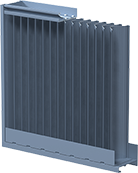 |
| Figure 3 Vertical Blade Louver |
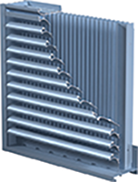 |
| Figure 4 Dual-Module Louver |
- AMCA 550 allows for either open or closed device products, making the use of combination louver/damper products with dampers in the closed position common (Figures 5 and 6). The closed device or dampered products that comply with AMCA 550 are for use in unoccupied facilities during a hurricane or tropical storm. Whereas fully open louvers that comply with AMCA 550 may be applied in either unoccupied or occupied facilities that must remain operational during severe weather events.
 |
| Figure 5 |
 |
| Figure 6 |
AFL-601 FEMA Louver is First to Pass Stringent AMCA 550 Test
New Greenheck louver model AFL-601 (Figure 7) has become the first wind-driven rain FEMA louver to be listed for AMCA 550 High-Velocity Wind-Driven Rain.
- It has vertical rear blades that provide high ventilation rates while shielding people in the room from wind-driven rain.
- It also has front horizontal chevron blades that can provide protection from storm hazards such as a 15 lb. 2x4 traveling at 100 mph.
- These features make the AFL-601 suitable for tornado safe rooms and ideal for storm shelters in the Hurricane-Prone Region.
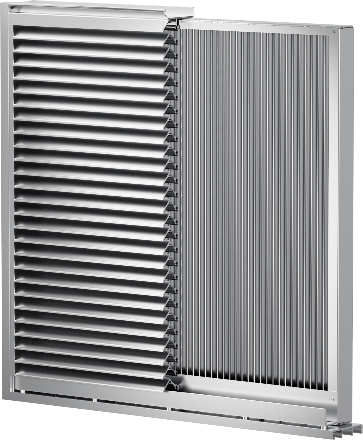 |
| Figure 7 Greenheck AFL-601 Wind-Driven Rain FEMA Louver |
Specifying Louvers for the Hurricane-Prone Region
Natural disaster preparation begins during the design and build stages of new structures. But IMC does not specifically dictate AMCA 550 approval or certification as the code language for intake or exhaust louvers in the HPR states. We recommend that design professionals specify and contractors install louvers in the HPR that bear the AMCA listing label for High Velocity Rain Resistance (Figure 8). The recommended language for design specifications is that louvers “shall comply with AMCA 550.”
.png?sfvrsn=f7063602_2) |
| Figure 8 |


from